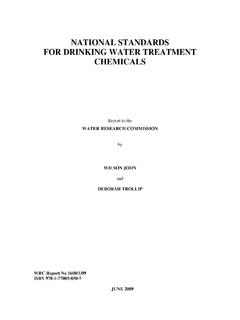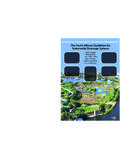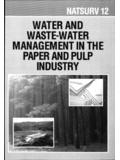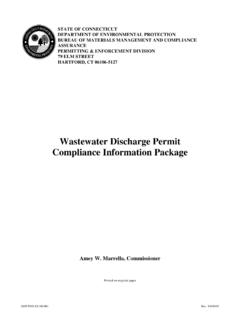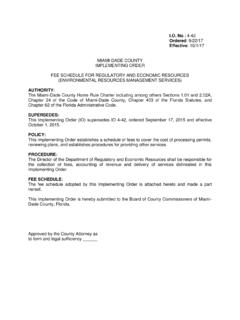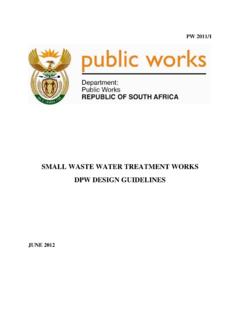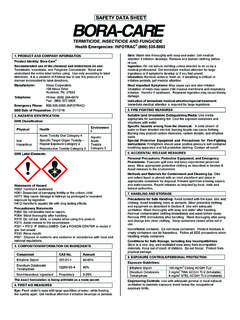Transcription of Process Design Manual For Small Wastewater …
1 Process Design Manual For Small Wastewater WorksDJ Nozaic & SD FreeseTT 389/09 Water Research CommissionTT 389 Process Design Manual For Small Wastewater WorksPROCESS Design Manual FOR Small Wastewater WORKS Report to the Water Research Commission by DJ Nozaic and SD Freese on behalf of Waterscience CC WRC REPORT NO. TT 389/09 APRIL 2009 ii Obtainable from Water Research Commission Private Bag X03 Gezina 0031 The publication of this report emanates from a project entitled Design Manual for Small Sewage Treatment Works (WRC Project No. K5/1660) DISCLAIMER This report has been reviewed by the Water Research Commission (WRC) and approved for publication.
2 Approval does not signify that the contents necessarily reflect the views and policies of the WRC, nor does mention of trade names or commercial products constitute endorsement or recommendation for use. ISBN 978-1-77005-826-2 Printed in the Republic of South Africa iiiEEXXEECCUUTTIIVVEE SSUUMMMMAARRYY INTRODUCTION The official starting date of this project was 1 April 2006 and the project was scheduled for completion in May 2008. However, due to the Project Steering Committee requesting the inclusion of material that was additional to that specified in the original proposal, the completion date for the project was extended to September 2008. The motivation for conducting such a project was based on the fact that 'A Guide to the Design of Sewage Purification Works' was first published in 1973 by the then Southern African Branch of the Institute for Water Pollution Control (IWPC) and over the years this useful reference document has become known as the 'Black Book'.
3 This guide was revised and republished in 1987, the same year that the IWPC became the Institute of Water and Environmental Management and the same year in which the Water Institute of Southern Africa was formed. A major decision taken by the Branch Council was that the revised publication should be applicable to sewage works treating up to 5 Ml/day of domestic sewage as there was concern that the revised book should not be used as a type of do-it-yourself Manual by people lacking adequate expertise to Design such a works. The purpose of the 1987 revised publication was to update outdated information, include new processes and provide the information in a more user-friendly manner.
4 The 1987 revision of the Manual was intended to be less of a guide to Design , and more of a Manual to assist firstly designers, and secondly engineers and/or chemists who may be required to approve the designs for smaller domestic sewage works treating up to 5 Ml/d. Since publication of the revised edition of the Manual for Design of Small Sewage Treatment Works in 1987, no further revision has been carried out, despite that fact that since then there have been a number of new technologies introduced into Wastewater . It is obvious that the Manual is in need of updating as several new processes are available and the understanding of the activated sludge Process , in particular, has advanced significantly since then.
5 The Manual also does not consider processes used in Small plants of the package plant type as are commonly used in housing complexes. It is clear that with technological advances and a number of changes in the procedures used in plant operation, a new Manual , covering these changes, is required. Another change to the Manual is that the maximum capacity of 5 Ml/d stipulated in previous versions is considered arbitrary and irrelevant. Although the Manual is designed with smaller Wastewater plants in mind, it needs to be borne in mind that much of the information and Design calculations are applicable to much larger plants and not confined to works of 5 Ml/d or less.
6 Many larger plants have been built in stages over extended periods of time, resulting in plants consisting of a ivnumber of smaller modules. In such cases this Manual could be of particular relevance. The Manual is however written with smaller Wastewater works in mind and is intended to assist in designing, approving and operation of these smaller plants. AIMS This aims of this project were to: Produce a preliminary Manual after sourcing literature sources and extracting information from these literature sources. Consult with other specialists in fields where this is considered necessary. Produce an internally edited and reviewed draft Manual for submission to a steering committee for peer review Produce the final Design Manual for Small Sewage Treatment Plants including the comments, recommendations etc.
7 Obtained after peer review of the draft Manual Conduct workshops to disseminate the information contained in the Manual to coincide with WISA 2008. METHODOLOGY The initial part of this project involved review of the existing Manual . It was proposed to update this Manual wherever necessary, particularly the biological filter and activated sludge chapters, and to add chapters on rotating biocontactors (RBC) and submerged media reactors. Once the Manual had been comprehensively reviewed, a thorough literature study was conducted to ensure that Wastewater treatment practices used both locally and internationally were covered. This made it possible to identify the key issues that needed to be addressed in compiling a new Manual and also highlighted any gaps that existed in the previous Manual .
8 The regulatory aspects and new legislative requirements were carefully considered in terms of how they were expected to impact on this Manual . A final draft of the Manual was proof-read by A Pitman, to check for content and errors, before being circulated to the Steering Committee members for comment. vAACCKKNNOOWWLLEEDDGGEEMMEENNTTSS The research in this report emanates from a project funded jointly by the Water Research Commission r and entitled: Design Manual for Small Sewage Treatment Works. The Steering Committee responsible for this project consisted of the following persons: Dr HG Snyman : Water Research Commission (Chairperson) Mr DJ Nozaic : Waterscience CC (Project Leader) Mrs SD Freese : Waterscience CC (Researcher) Mr CS Crawford : Department of Water Affairs and Forestry, DWAF Prof WA Pretorius : PretWatSpes Mr W Alexander : Alexander Process Consulting Mr APC Warner : PD Naidoo & Associates (Pty) Ltd, PDNA Mrs MM Komape : Department of Water Affairs and Forestry, DWAF The financing of the project by the Water Research Commission and the contribution of the members of the Steering Committee are gratefully acknowledged.
9 The assistance of Mr A Pitman in proof reading the document is also gratefully acknowledged. A number of diagrams and photographs used in this Manual were obtained from the eWISA website. Gareth McConkey and the rest of the eWISA team are gratefully acknowledged for the use of this material. The eWISA website provides excellent information on a wide variety of topics dealing with water and Wastewater and is a highly recommended site for anyone involved in the water and Wastewater fields. Visit Alistair Hunter is thanked for assisting in obtaining some of the excellent quality photographs obtained in this Manual . Narina Ramdhaw is thanked for her excellent drawings which appear in Chapter 7.
10 Kim Hodgson is also acknowledged for ensuring that references made to legislation that is currently under revision (Regulation 2834 of the National Water Act) was correct at the time of publishing. vi viiTTAABBLLEE OOFF CCOONNTTEENNTTSS EXECUTIVE SUMMARY .. iii ACKNOWLEDGEMENTS .. v TABLE OF CONTENTS .. vii LIST OF FIGURES .. xvii LIST OF TABLES .. xix GLOSSARY .. xxi CHAPTER 1 .. 1 1. INTRODUCTION .. 1 INTRODUCTION .. 1 HOW TO USE THE Design Manual .. 2 CHAPTER 2 .. 3 2. Design PRELIMINARIES .. 3 GUIDE TO ESTABLISHING A Wastewater 3 INTRODUCTION .. 3 Effluent Standards .. 4 Sludge UTILISATION AND DISPOSAL Standards .. 4 Maintenance .. 4 Operator Level .. 4 POPULATION AND PROJECTIONS.

